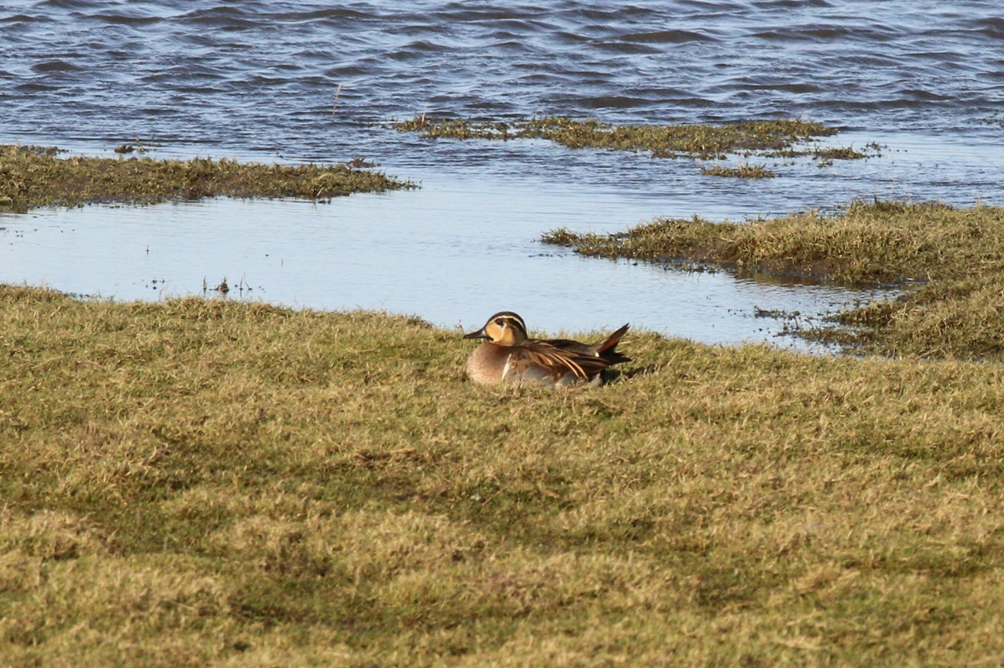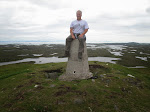Baikal Teal – Crossens Outer Marsh, Southport, Merseyside, 4th December 2013
Sketches of the Baikal Teal at Crossens Outer Marsh, attempting to capture the wacky head pattern (strangely reminiscent of Red-breasted Goose and even summer-plumage Wilson's Phalarope).
Another twitch! And, more to the point, a successful one. (By way of context, for a whole host of reasons, by the 2000s and 2010s – if not a few years before – my twitching activities had slowed, and typically I was only seeing two or three new species each year. However, there were brief flurries involving more such activities; in both 2004 and 2005 I had upped the number of new species to a heady five, and during the last few months of 2013 I twitched the Mourning Dove on Rhum a month or so before this twitch, and the Brunnich’s Guillemot in Portland Harbour less than a month after it). Anyway. Where were we? Although busy with work (I was in my ‘providing ecological and ornithological support to single wind turbine applications’ phase!) I had a few days my father’s in Chesterfield at the end of November / start of December 2013.
During the course of this, on Saturday the 30th November, an adult male Baikal Teal was found at Marshside RSPB Reserve, near Southport in Merseyside (or Lancashire, in old money!) but there were conspiracy theories about an apparent hybrid duck ‘showing characteristics of Baikal Teal and Teal’ at the same site in the days previous. There was also the small matter of the hitherto presumed escape Ross’s Goose there...... .
The initial photographs and views on the 1st December helped to allay initial fears as to the bird’s genetic purity; the bird looked good, after all, for Britain’s fifth Baikal Teal and helpfully it was hanging out with Wigeon and Teal and trying to look wild.
As such, it was, when all was said and done, un-ringed, fully-winged, had no signs of hybridisation, had arrived at a ‘good’ time of year, and behaved like a wild bird.
Therefore, when I travelled home from Dad’s on Wednesday the 4th December, I did so via Crossens Outer Marsh and the Baikal Teal. Obviously.
Once there I parked up on Banks Road and walked from there out onto the seawall on Crossens Marsh. Here I bumped into Ken Shaw and John Nadin who were twitching it from Scotland. I also chatted to Chris Tynan, of the Sefton Ranger Service managed by my good mate Dave McAleavy, who was skiving off to see the bird.
Anyway, the Baikal Teal was showing reasonably well amongst the other ducks out on the marsh, although it later moved and I then saw it better from the Marine Drive, having returned to my car, and then mounted the kerb and parked on the pavement alongside the road so that I could get better views before continuing home to Edinburgh.
I sketched it in my notebook, and captioned the sketch ‘a lot going on’; it had a very complicated plumage which is difficult to describe. However, here goes. It had a complex head pattern which involved black area around the eye. A thin whitish line curved down the lower face from the rear of the eye patch and in doing so separated areas of buffy-yellow on the lower cheek and lores. The rear of the cheek and the area behind and above the eye was dull green, and again a very thin black line separated this from the adjacent yellow, whilst a very thin white line fringed the edge of the green on the neck. There was a thin white line between the green and the yellow and the dark brown crown. The upper breast was pinky-brown and the lower breast and flanks were grey, with a ‘Green-winged Teal’ white line and a less obvious white line between the flanks and the under-tail coverts. The under-tail coverts were black and the tail was grey-brown with orangey outer tail feathers. The back and wings were grey-brown with long mid-brown ‘aigrettes’ which were dark-centred.












